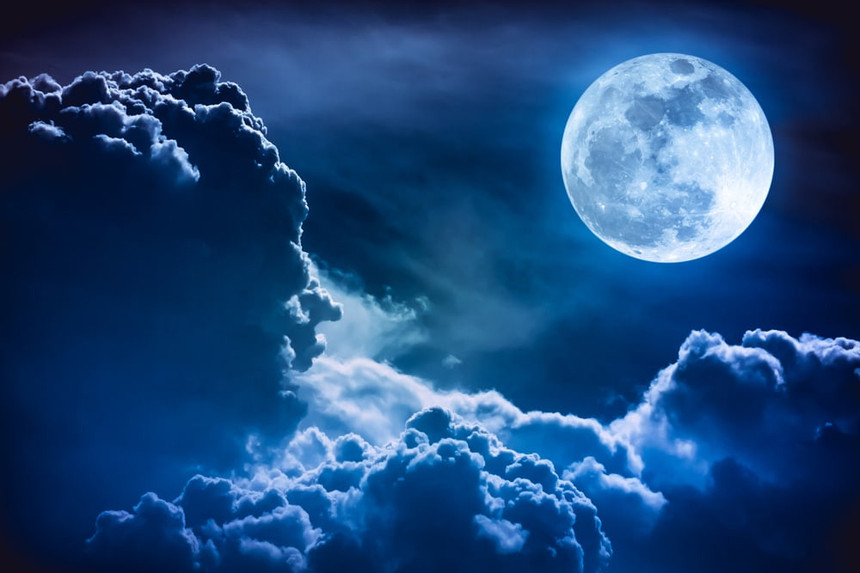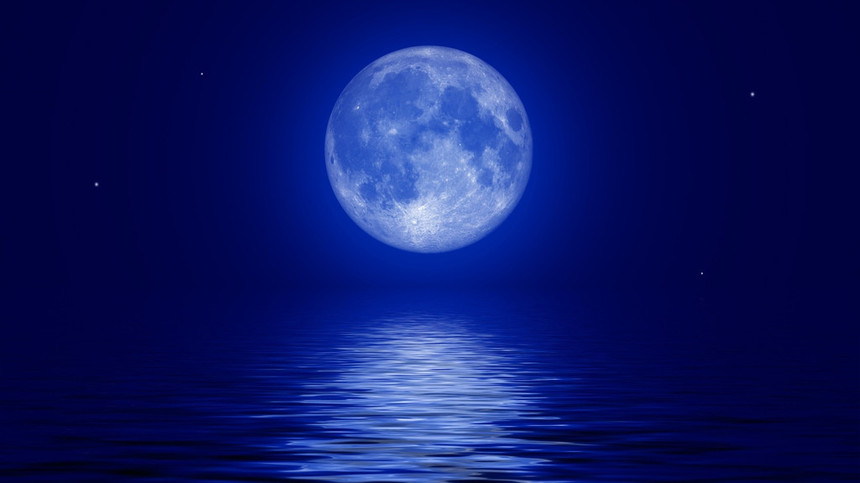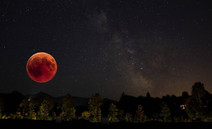
Have you ever heard of the blue moon? Many people are surprised by this phrase, because in the classical sense, the Earth's satellite is milky white or yellow, and closer to the horizon even red, due to the refraction of light in the atmosphere.
In our country with the phrase "blue moon" is more often associated with a funny song from the late 90s. But in Britain, the phrase "Someday, in the blue moon" is used for more than a hundred years, and in translation is analogous to our proverb "When the crab on the mountain whistles," that is, very rarely or never. Obviously, the expression has nothing to do with the color of the moon.
So the moon is never blue? Not exactly. It turns out that in rare cases, the satellite of the Earth can indeed turn blue, and even purple. But only few people have seen this natural phenomenon. You need to be in the right place at the right time.
The optical effect
The fact that the blue light in the atmosphere is scattered better than other colors. In this case, it is scattered not only on air molecules, but also on the dust which is present in the atmosphere. That's why in some cases, when the small dust particles in the air become incredibly abundant, we observe the moon with a special, blue hue. This usually happens during volcanic eruptions or large fires.
For example, in 1950, a huge fire in the peat bogs of Canada resulted in an incredibly large emission of fine dust particles (no more than 1 micron in diameter) into the atmosphere. Such particles, invisible to the human eye, filled the atmosphere for as long as the peat bog smoldered. And all this time the residents of the Canadian province of Alberta observed an unusual moon of a pale purple and blue hue. And even the Sun on these days was also colored blue.
A similar situation may occur in areas where there has been a recent volcanic eruption. A similar picture was observed by the inhabitants of Indonesia in 1883, after the most powerful eruption of the volcano Krakatoa. A column of ash exploded from the mouth of the volcano absorbed the red part of the spectrum, causing the Indonesians for several years to observe a blue and sometimes even green moon!
By the way, according to volcanologists, after the eruption of Krakatoa, even residents of the United States for a long time observed the lavender-colored sun and were surprised by the incredibly large, red sun during sunset. Some even called the fire department, quite realistically fearing a fire.
More recently, in 1991, the eruption of the Pinatubo volcano also delighted locals who could watch the moon with a bluish cast at night for several months.
The traditional definition of a blue moon
By the way, the blue moon is not just a catchphrase and optical effect. The lunar calendar also contains this concept. Moreover, there are two of them at once.

1. traditional (seasonal).
To begin with, it is important to understand that for farmers, even before the invention of the calendar, nights with full moons were of great importance. Farmers used the days of the vernal equinox and the winter solstice to determine the coming of the four seasons. Even today, farmers look forward to these days to start sowing or to start harvesting and preparing for winter.
However, based on this system of calculation, winter does not begin on January 1, but on December 22, i.e. on the winter solstice. Summer also begins on June 22, not January 1.
Not surprisingly, each full moon, of which in most cases there are three in one season, has its own name. For example, Lent includes the Lenten full moon, and the full moon a week before Easter is commonly referred to as the Eggs' full moon.
That said, there are 12 full moons per standard year, that is, 3 full moons for each of the 4 seasons. However, in the Solar or "Tropical Year," which means the year when the Earth completes the cycle of the changing seasons, there are not 12 but 13 full moons. This means that there are not 3 but 4 full moons per season. This additional full moon is commonly referred to as the blue moon. Although, outwardly, such a full moon is no different from the other 12.
If you're wondering, the dates of the closest blue moons according to the traditional interpretation fall on May 12, 2027, and August 22, 2035.
2. Modern (monthly).
Amateur astronomer James High Pratt, was not familiar with the traditional description of the occurrence of the 13th full moon, and therefore described the phenomenon in his own words. "In the 19-year cycle of the Earth's rotation, there are 7 times in years in which 13 full moons appear instead of 12. This means there are two full moons in one month of the year instead of one." This "extra" full moon is what should be considered a blue moon.
Surprisingly, the press gladly picked up this simple interpretation, and it became more popular than the traditional one.
By the way, according to the modern currents, the nearest blue moons can be observed: August 1 and August 31, 2023, May 1 and May 31, 2026, as well as December 2 and December 31, 2028.
Concluding the article, we say that fans of unusual photographs of the dates of the so-called blue moons will not be too interesting, because the night light will be ordinary in appearance - and therefore yellowish-white. It is much more interesting to go to a place where, because of emissions into the atmosphere, humanity can actually observe an amazing phenomenon - an unusual moon with a blue cast.




Comments ('0')
Discuss